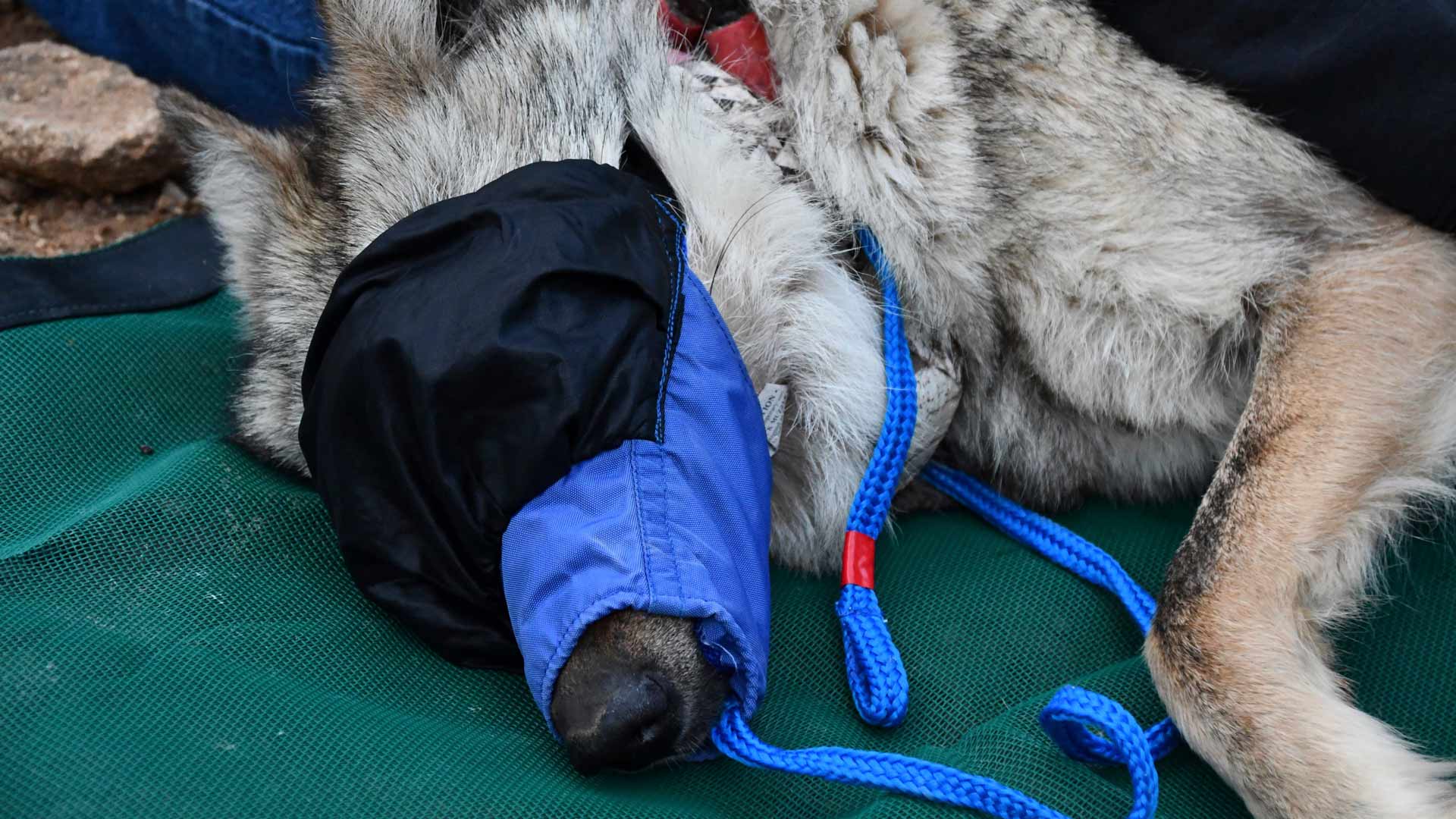 This June 7, 2023, photo provided by the U.S. Fish and Wildlife Service shows a female Mexican gray wolf before she is released back into the wilds of Apache National Forest in eastern Arizona. U.S. Fish and Wildlife Service said the wolf had been found wandering in New Mexico outside a zone created for the recovery of her subspecies.
This June 7, 2023, photo provided by the U.S. Fish and Wildlife Service shows a female Mexican gray wolf before she is released back into the wilds of Apache National Forest in eastern Arizona. U.S. Fish and Wildlife Service said the wolf had been found wandering in New Mexico outside a zone created for the recovery of her subspecies.
A female Mexican gray wolf that a group of schoolchildren nicknamed Asha has been returned to the wilds of Arizona after she was found wandering in northern New Mexico outside of a zone set up for the recovery of her subspecies, the U.S. Fish and Wildlife Service said Wednesday.
The wolf was headed north into the southern Rocky Mountains of New Mexico in January when the wildlife service captured her outside the recovery area. The Fish and Wildlife Service says it does not anthropomorphize wild animals by using human or pet names favored by the public and nongovernmental groups and calls her Female Wolf 2745.
“Wolves like Asha have shown, time and time again, that this purely political boundary is ecologically irrelevant,” said Cyndi Tuell, Arizona and New Mexico director of the nongovernmental Western Watersheds.
Tuell and other environmentalists say the zone is arbitrary and that the animals should be able to roam freely, potentially introducing them to other wolves for breeding and increasing their genetic diversity, conservationists insist.
The Fish and Wildlife Service said the wolf born in 2021 had wandered into a territory where there are no other wolves to breed with.
She crossed north of Interstate 40 and ultimately traversed more than 500 miles (800 kilometers) into New Mexico, where she was captured near Taos and temporarily held at a wildlife service facility outside Socorro. The wolf was taken back to east Arizona to be released on June 7 into the wilds of the Apache National Forest.
She was fitted with a radio collar in the fall of 2022, and the agency will continue to monitor her movements following her release.
The Mexican gray wolf is an endangered subspecies of the gray wolf whose numbers in the Southwest dwindled dangerously close to extinction before efforts to bring it back under the 1973 Endangered Species Act. The last known wild Mexican gray wolves were captured in the late 1970s, and the gradual recovery began with seven of the animals being successfully bred in captivity.
The Fish and Wildlife Service reported in February that an annual census of Mexican gray wolves in the wild in the U.S. found a total of 241 in New Mexico and Arizona.

By submitting your comments, you hereby give AZPM the right to post your comments and potentially use them in any other form of media operated by this institution.